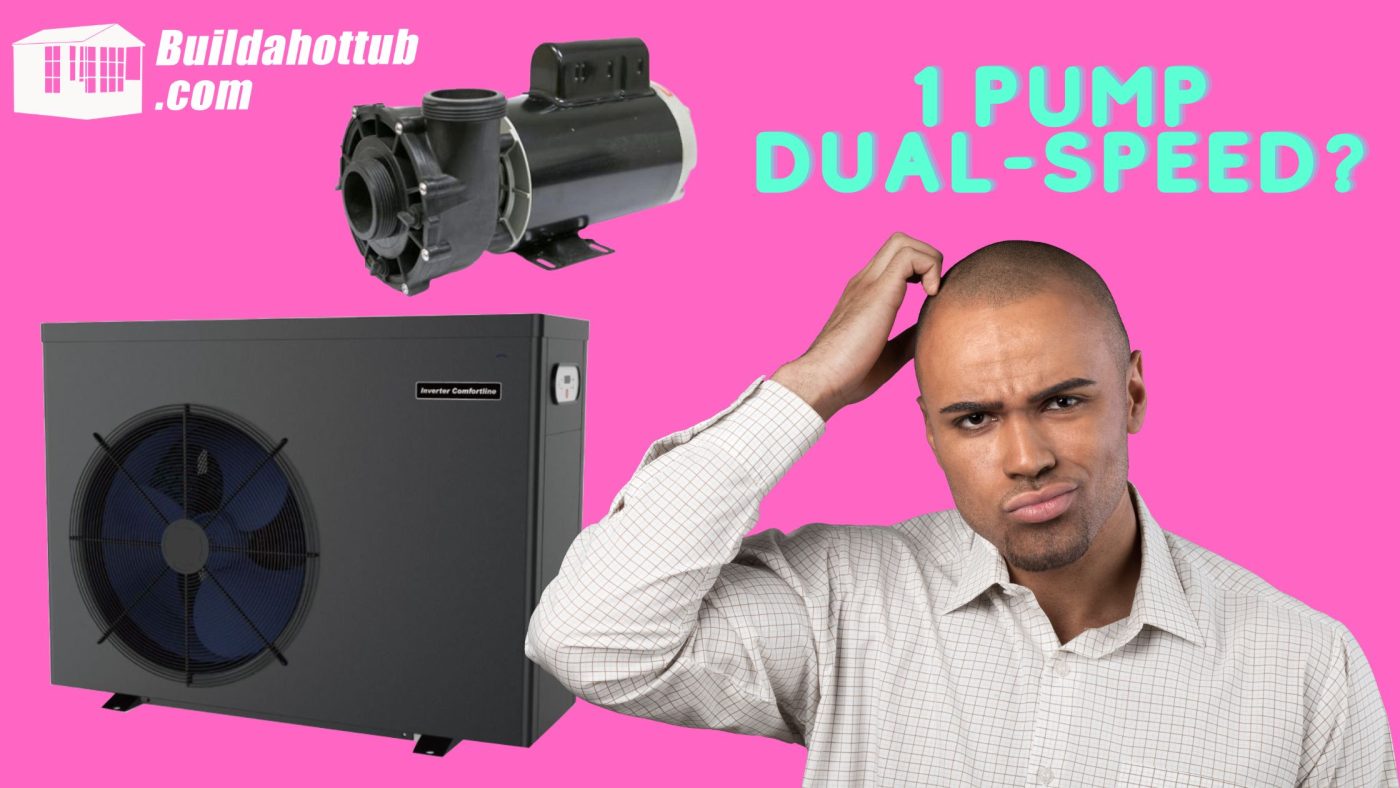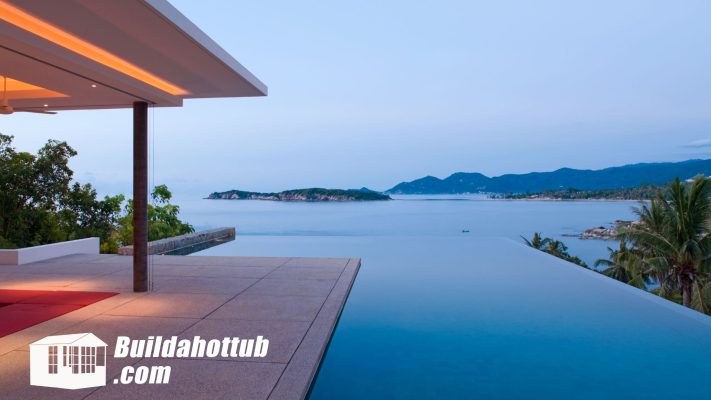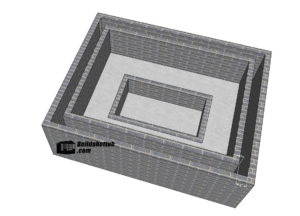There are quite a few hot tubs out there that run on a single pump. If you have a 13A hot tub then this is going to be you. The dual speed pump controls the filtration as well as the jets. However, with the cost of electricity prices rising, you may be looking to reduce your bills with the use of an Air Source Heat Pump.
However, if you are not sure whether you can use an Air Source Heat Pump with a dual speed hot tub pump then read on – I will let you into a secret – YOU CAN!
However, there are a few things you need to know and consider before you take the plunge – see what I did there!
What is a Dual Speed Hot Tub Pump?
A Hot Tub with just a single pump in the cabinet is usually a dual speed model. This means that the single pump can do both the circulation, heating and filtration (via the filter), but also the jets. This type of pump is very common on 13A plug and play hot tubs that do not need any special electrical wiring. Also, some older Hot Tub models only came with a single pump.
How do I connect an Air Source Heat Pump to a Dual Speed Pump?
The process of connecting an Air Source Heat Pump to a hot tub with a dual speed hot tub pump is not any different. It is almost the same plumbing layout that you will find with a hot tub pump that has a circulation pump.
However, my advice on this is that you should be running on 2” pipework right up to the Air Source and bypass which will usually be 1.5”. The reason for this is that we always want to maximise the flow through the pipes to try and minimise any impact on the jets.
However, there is a magic ingredient.
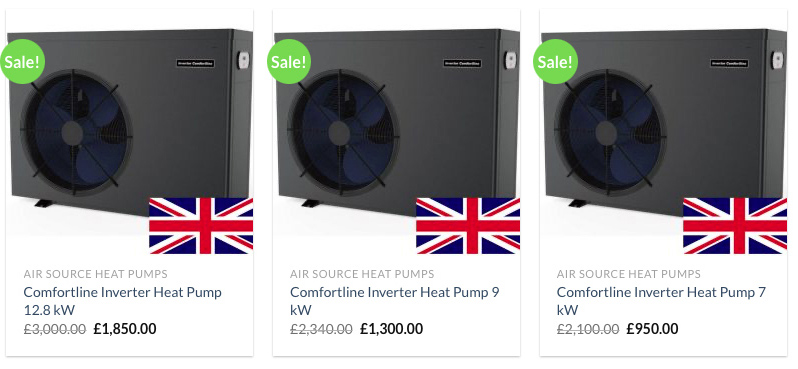
What Is the Magic Ingredient?
The magic ingredient is a 2” one-way spring-loaded valve. This is “key” to this whole thing working. When the pump is on low speed, the valve is closed, and all the water passes through the Air Source Heat Pump.
When the pump is on high speed, the jets turn on, pressure builds and the flapper spring loaded valve opens to allow more flow through to the jets. The heat pump doesn’t have pressure errors, you don’t see a noticeable drop on the power of your jets – win win.
The great thing about this setup too is that you don’t need to have any manual intervention or setting of the bypass – it is all done automatically.
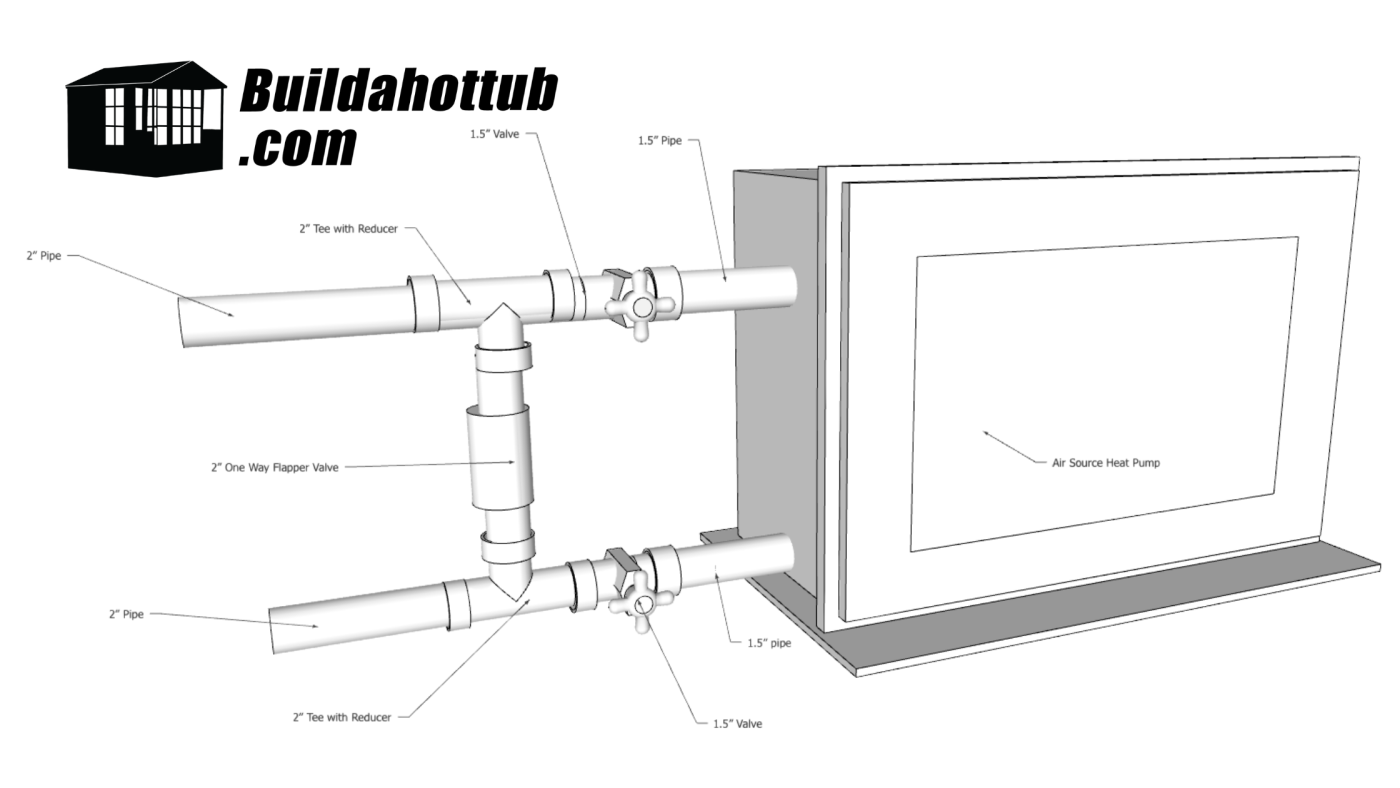
In Cabinet Alternative Bypass Setup to Increase Flow
This setup should be placed in the hot tub cabinet if you have space. The arrangement of the Tees and the Bypass valve means that the flow is increased when the pump is on high speed.

What are the Downsides of an ASHP on a Dual Speed Hot Tub Pump?
The major downside of adding an air source heat pump to a dual speed pump is that you are inevitably going to reduce the flow and power on the jets. Depending on how many jets you have you may or may not see a difference. It is very hard to predict and unfortunately, it is not something that you can check in advance.
As a general rule, you will lose some power on the jets with the addition of an ASHP. Physics says adding more pipe, bends and volves to your setup will cause this. Whether it is noticeable is not something that can be predicted. 9 times out of 10 it is not.

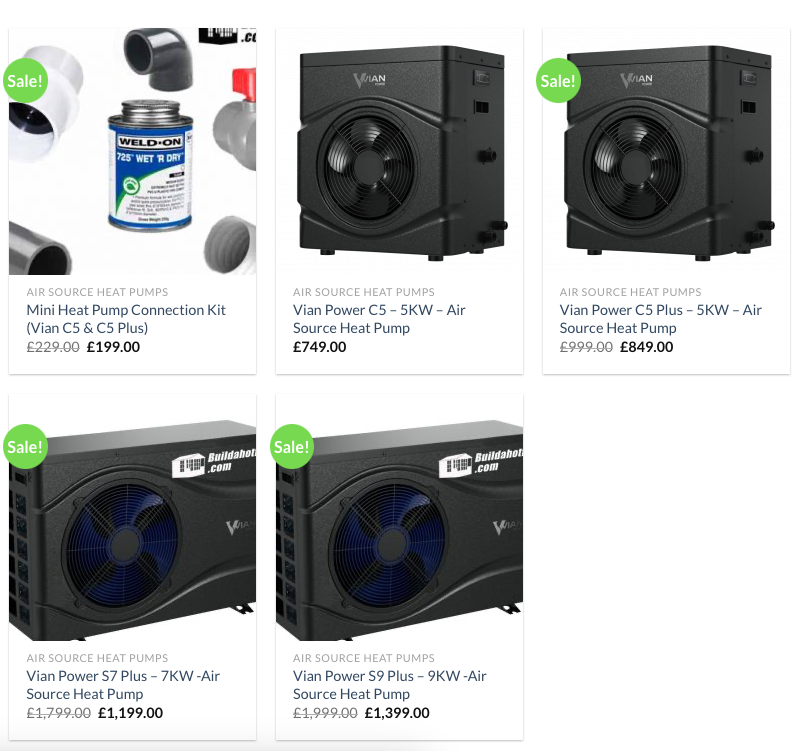
How do I make an ASHP work with a dual speed pump?
Making an air source heat pump work with a dual speed pump really comes down to the bypass valve setup on the heat pump. More often than not, with a dual speed pump and an air source heat pump, the one way valve on the bypass setup will open when you want to use the tub on high speed.
The Air Source Heat Pump is not going to like the amount of pressure that you are putting through it when the jets are on high. Now, if you have a smaller tub, then this might not be an issue, but again, this is not something you will be able to tell in advance.
That said, we will always plan for it being a problem with the plumbing layout and we put in the bypass. What that means is that the one way valve can open to reduce the pressure of water going through the air source.
Electrical Requirements
This is the bit that gets a little tricky. In general, if you have a dual speed pump, you will be on a 13A hot tub. I know I am generalising here, and it will not be the case for everyone, however, this is the general rule.
If you are wiring in your Air Source Heat Pump, you are going to need to give it its own electrical feed. Even if you disconnect the electrical heater, which is what you should be doing otherwise you will not be saving as much, if you are powering the tub off the central hot tub block, then when your jets go on full, you will draw too much current and it will trip your breaker. 13A is not enough to run a pump on high speed and an air source heat pump from the same power supply at the same time. Therefore, your electrical heater on a 13A tub would not heat and the same time the jets were on high.
You could power the Air Source off the heater socket on the tub with a Molex connection, however, this is not something I advise. The reason I don’t advise this, even though it works just fine, is that you are killing the power to the air source heat time the tub stops calling for heat. This means that the air source heat pump will not go through the correct shut down procedure when this happens. My personal opinion, and it is just that, it’s my own opinion in that you should let the unit “do its thing” when the tub is not calling for heat and go through the correct shut down procedure.
Ideally, you will need a dedicated supply for your Air Source Heat Pump and it will need to be on its own feed or a larger 32A supply if the hot tub is on this too NOT a 13A. If you are not sure about this portion, then you should always contact a qualified electrician who can advise you.
Happy “dual speed pump air source heating” hot tubbin’
.

Can I Help You?
If I can help you in any way I would love to hear from you. You can get in touch using the form below.
Thanks - Andi
 Hi, Andi here. I own Buildahottub.com and also write all of the articles and info pages on the site. Some years back now, I built my own hot tub but struggled to find the information I needed. So, once my tub was complete, I started this website to help others in their own pursuit of hot tub and plunge pools DIY building information.
Hi, Andi here. I own Buildahottub.com and also write all of the articles and info pages on the site. Some years back now, I built my own hot tub but struggled to find the information I needed. So, once my tub was complete, I started this website to help others in their own pursuit of hot tub and plunge pools DIY building information.
Fast forward to 2025, I've helped over 1400+ DIY customers just like you all over the world build hot tubs and pools. Have a good look around the site, there are lots of resources here. Please do get in touch if I can help you. - Cheers, Andi

